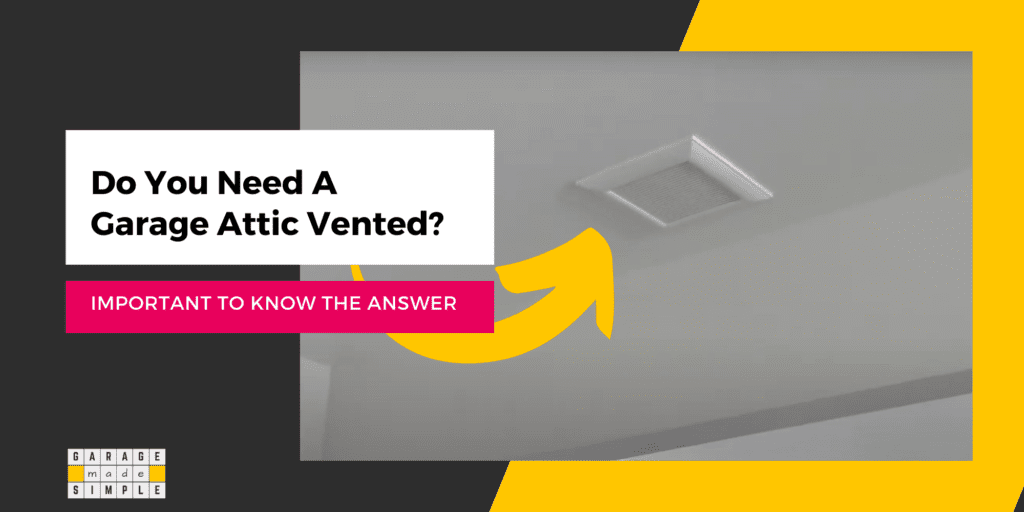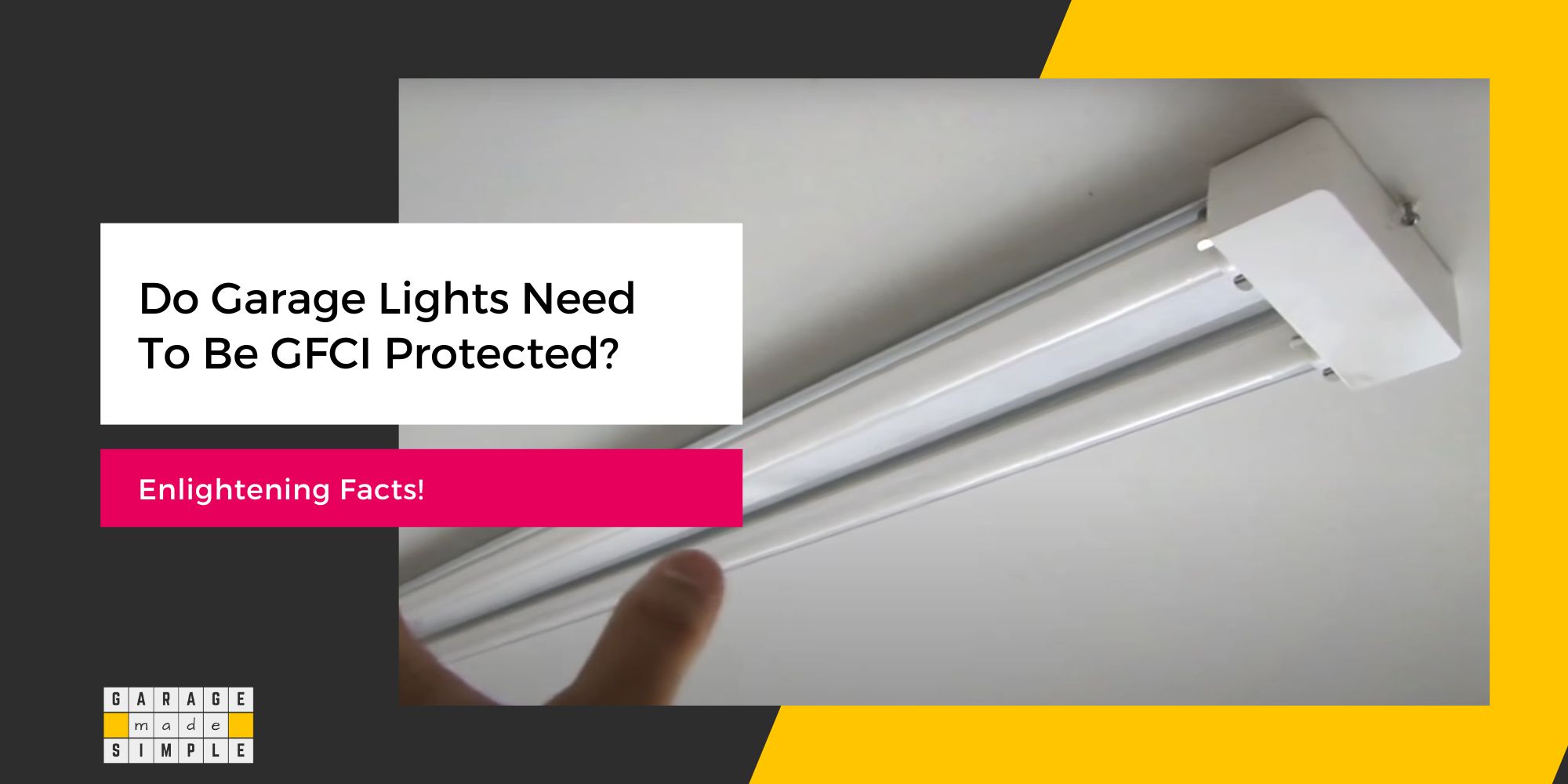Do You Need To Have Your Garage Attic Vented?
As an Amazon Associate, I earn from qualifying purchases.
Does Garage Attic Need to Be Vented?
The garage attic is the space between the roof rafters and the ceiling joists. There are several ways you could use a garage attic. In extremely cold climates you may use it for much needed insulation. You could use it as additional storage. Or you could just let it be. But does a garage attic need to be vented?
A garage attic should be vented to improve air circulation in the garage, reduce moisture condensation & mold growth and save on energy bills for cooling during summer.
If you think your garage is a dark and dingy place, then think again. A garage attic takes the cake when it comes to being dark and dingy. But it does not need to be that way. You can create a brighter and airier attic with a clever use of vents, soffits, fans or roof wind turbines.

What Happens If Your Attic Is Not Vented?
There are four different ways that a garage attic can be used. The garage attic needs to be vented, irrespective of the way it is used. Ventilating a garage attic is one of your garage ventilation options.
The effect of not ventilating the garage attic will have different consequences for each type of use. Here are the details:
Ventilation in a Garage Attic Used as Living Space
A garage attic may be used as living space, especially in an attached garage. The attic can easily be accessed from the upper floor of the house. The garage attic can then be used as a part of the house.
You could use it for storage, home office, children’s playroom or even as a bedroom. However, the ceiling separating the garage from the living quarters must comply with Section R302.6 and Table R302.6 of the 2018 International Residential Code (IRC).
The Table R302.6 of the code requires that the material used in Structure(s) supporting floor-ceiling assemblies used for separation should not be less than ½-inch gypsum board or equivalent.
The garage attic used as livable space must also comply with the code on Indoor Air Quality (IAQ). The US Environmental Protection Agency (EPA) and ANSI/ASHRAE Standard 62.2-2019 guidelines IAQ in living spaces, is:
ASHRAE (formerly called the American Society of Heating, Refrigerating and Air-Conditioning Engineers) recommends (in its Standard 62.2-2019, “Ventilation and Acceptable Indoor Air Quality in Residential Buildings”) that homes receive 0.35 air changes per hour but not less than 15 cubic feet of air per minute (cfm) per person. as the minimum ventilation rates in residential buildings in order to provide IAQ that is acceptable to human occupants and that minimizes adverse health effects.
Ventilation in a Garage Attic Used as Storage Space
If you are running out of storage space and even your garage is bursting at its seams then using the garage attic as storage space is certainly an attractive option. But this is easier said than done.
First of all you have to ensure that the roof trusses are strong enough to take on the additional load you intend to put in the garage attic. The same goes for the ceiling joists. Check the drawings or get a fresh evaluation done by a certified structural engineer.
Next you need to install a ladder or a lift to go upto your garage attic. There are several options. The arrangement could be temporary, permanent or retractable. You also need to install floorboards to walk on and keep your stored items on.
Last but not the least you have to put in the right ventilation. The vents may be passive such as wind turbines or soffits or active such as exhaust fans.
If you ignore ventilation, then the garage attic is sure to look like a scene from a horror movie.
There will be cobwebs all over the place. Cockroaches and rats will be scurrying around feasting on your precious stored items.
Ventilation in a Garage Attic Used for Insulation Space
In cold climates, it is best to use the attic to provide additional insulation to your garage. The snow that piles up on your garage roof will cool down the air in the garage attic. Cold air, as you know, is heavier. It will sink into your garage space and make it even colder than it needs to be.
Using insulation in your attic is an effective way of keeping your garage warmer in the winters. Actually attics need the highest levels of insulation as you can see from the R-Value chart below.
To find out you must first determine the climate zone your home falls in using the map below:

Image
Source: Home Depot
You could use insulation batts, rolls or blown in insulation in the garage attic.
Even when you are using your garage attic primarily for insulation, you need to have the garage attic vented. The attic is prone to condensation, and therefore mold growth, as that is where the hot air from the garage meets the cold air under the roof.
To prevent condensation and mold growth in the garage attic, you must install a combination of soffits and exhaust vents in the garage attic.
Consider installing Continuous Soffit along with a Ventilator, Turbine, both available at Amazon to keep your garage attic vented.
Ventilation in a Garage Attic Used as Empty Space
If you are not using your garage attic for living space or storage space or even insulation space then you are likely living in one of the southern states. Basically you are using your garage as empty space.
Nothing changes.
You still need to have your garage attic vented. Maybe condensation is not the problem. But attic vents will get all the hot air out of your garage, saving you a ton of money in energy bills.
You need ventilation irrespective of whether the garage is insulated or uninsulated, attached or detached. Passive Ventilation does have an initial cost but there is no running cost. There may be a very small maintenance cost.
Thank you very much for reading the post. I do hope you found it informative and useful.






